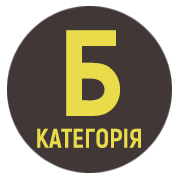ENGLISH-LANGUAGE INTERNET MEMES ABOUT COVID-19: A COMMUNICATIVE AND PRAGMATIC ASPECT
DOI:
https://doi.org/10.32782/folium/2024.5.16Keywords:
Internet meme, communicative and pragmatic aspect, COVID-19, Internet communication, pandemic, cultural discourse, Englishlanguage memeAbstract
The article is dedicated to the study of English-language internet memes about COVID-19, focusing on their communicative and pragmatic aspects, with an emphasis on their role in social communication during the global pandemic. During this period, memes became an important tool for expressing public sentiments, emotions, and opinions. They serve functions such as informing, entertaining, offering social critique, and providing humorous interpretations of reality. The article analyzes various aspects of wordplay, irony, and satire used in memes as effective tools to influence the audience. These communicative strategies help society adapt complex or stressful situations into more accessible and understandable forms. Our research reveals that English-language memes not only reflect the sociocultural and psychological reactions to the pandemic but also play an active role in shaping collective memory of this period. They are an integral part of modern media discourse, contributing to a deeper understanding of communicative processes during global crises. In this context, memes act as both a source of support for society and an effective tool for disseminating information online. The study of English-language memes about COVID-19 highlights the diversity of lexical groups actively used in this genre. Neologisms, abbreviations, and slang expressions give COVID-19 memes emotional intensity and humor, shaping a specific cultural reaction to the crisis. A stylistic analysis demonstrates how linguistic and visual means in memes are employed to achieve various effects on the audience, focusing on topics like mask-wearing, social distancing, and criticism of pandemic management measures.
References
Безугла Л. Р. Лінгвопрагматичні властивості мемів. Міжособистісна комунікація та перекладознавство: сучасні перспективи розвитку: збірник тез та доповідей І Всеукраїнської науково-практичної конференції (м. Черкаси, 12 квітня 2023 р.). Кременчук, 2023. С. 9–10.
Дзюбіна О. І. Класифікація, структура та функціонування інтернет-мемів в соціальних мережах Twitter та Facebook. Young Scientist. 2016. № 2 (29). С. 375–379.
Король С., Климанська Л. COVID-19: загрозливий імідж в українському медіапросторі. Соціологія – соціальна робота та соціальне забезпечення – регулювання соціальних проблем : матеріали XІ Міжнародної наукової конференції (м. Львів, 13-14 травня 2021 р.). Львів, 2021. С. 23–25.
Неклесова В. Ю. Меми як частина онімного простору. Записки з ономастики. 2017. Вип. 20. С. 210–222.
Смола Л. Мем як інструмент інформаційної війни. Вісник Київського національного університету ім. Тараса Шевченка. 2019. С. 91–95.
Пода Т. А. Інтернет-меми як феномен інформаційного суспільства. Вісник Національного авіаційного університету. Філософія. Культурологія. 2017. № 1. С. 117–120.
Чернікова О.І. Вербальний, невербальний та комплексний меми: класифікація за способом подання та сприйняття інформації в інтернет-середовищі (на матеріалі англомовних кіномемів). Вісник Київського національного лінгвістичного університету. Серія Філологія. Том 18. № 1. 2015. С. 151–156.
Bilyk, O., Bylytsia, U., Doichyk, O., Ivanotchak, N., & Pyliachyk, N. (2022). COVID-19 Metaphoric Blends in Media Discourse. Studies about Language/Kalbu Studijos. 2022. № 40.
Burgess J. All Your Chocolate Rain Are Belong to Us? Viral Video, YouTube and the Dynamics of Participatory Culture. Video Vortex Reader: Responses to YouTube. 2008. Р. 101–109.
Crystal D. Language and the Internet. Cambridge: Cambridge University Press, 2017. 272 p.











